SPECIAL REPORT : Part 374
German Ambassador Jorn Rohde accompanied by both local and foreign journalists at the Mannar mass graves site
By Shamindra Ferdinando
Sri Lanka is ‘blessed’ with a very vocal section of the diplomatic community. Those who represent this grouping work overtime on domestic issues. During the conflict, they did their best to throw a lifeline to the Liberation Tigers of Tamil Eelam (LTTE) when it was literally gasping for its last breath. They stepped up their efforts in the post-war period.
Sri Lanka lacked a workable strategy to deal with growing external interventions. This grouping worked through some political parties, a section of the civil society groups, and the media. They intervened in a spate of issues, ranging from the disappearance of NGO activist Kathiravel Thayapararajah, in Sept 2009, to safety and security of one-time Director of the Criminal Investigation Department (CID) Shani Abeysekera.
The grouping backed any issue that facilitated its overall strategy to tarnish the country for defeating the world’s most ruthless terrorist outfit by their own reckoning. The grouping never forgave the Rajapaksas for bringing the war against the LTTE to a successful conclusion, in May 2009. The UN has been deeply involved in the high profile politically-motivated operation. There cannot be a better example than UN Resident Coordinator Hanaa Singer’s intervention in the simmering issue of cremation of Muslim victims of the raging Covid-19 epidemic.
Singer, in a letter dated Nov 12, 2020, addressed to Prime Minister Mahinda Rajapaksa, pressed the government to end the cremation of all Covid-19 victims. The controversial letter, also copied to Foreign Minister Dinesh Gunawardena, Justice Minister Ali Sabry, PC, and Health Minister Pavithradevi Wanniarachchi, challenged the disposal through cremation the bodies of those who died of the Covid-19 infection. Singer backed UN intervention on the basis of a plethora of requests from the Muslim community, as well as others.
Singer faulted Sri Lanka for what she called a discriminatory policy adopted as regards disposal of bodies.
A section of the media received the Colombo-based UN head’s letter hours after it was delivered to Offices of the Prime Minister and Foreign, Justice and Health ministers. Who released Singer’s letter? Did the UN Resident Coordinator’s Office make the letter available to the media? Or did the PM’s Office, or did the ministers, Gunawardena, Sabry or Wanniarachchi release it? Who benefitted from the public getting to know the UN intervention in purely a domestic matter? The story received significant international media coverage. Interested parties felt the issue could be quite useful at the March 2021 sessions at the Geneva-based United Nations Human Rights Council (UNHRC) sessions to further hammer the country.
The UN Resident Coordinator’s push to end mandatory cremation here received the backing of three members of the Sri Lanka Core Group at Geneva. The Sri Lanka Core Group comprises the UK, Canada, Germany, North Macedonia, Malawi and Montenegro. Can one imagine a justifiable reason for North Macedonia, Malawi and Montenegro to be part of the Sri Lanka Core Group except to serve as lackeys of the West? The UK, Canada and Germany backed the moves to end mandatory cremation. They exploited the issue to the hilt. Those who cannot stomach Sri Lanka’s triumph over terrorism always sought to isolate the country’s wartime leadership. But, they didn’t have an issue with the war-winning Army Chief General Sarath Fonseka as he had succumbed to political maneuvering that paved the way for the Sinha Regiment veteran to challenge President Mahinda Rajapaksa at the January 2010 presidential election, the first major national poll, after the near three-decade old war ended. Fonseka lost by a staggering 1.8mn votes.
So, it’s no wonder that one of the first things that the Iraqi rebellion did after the Western-led invasion of that country was to blow up the whole UN compound in Baghdad for the sordid role the world body played in building up a bogus case against Iraq of there being weapons of mass destruction in that country, on which the US-led invasion there took place.
Core Group worried over Easter
Sunday suspect
At the behest of diplomatic missions in Colombo, the UK, at the ongoing 47th Geneva sessions, on June 22, 2021, on behalf of Sri Lanka Core Group raised the following issues. The grouping (1)stressed former CID Director Shani Abeysekera’s safety and security (2) plight of human rights lawyer Hejaaz Hizbullah (3)continuing restrictions on memorialization (4) declared support for the Bar Association of Sri Lanka as regards the need for an independent and impartial investigation into recent deaths in police custody.
Let me, first of all, appreciate the Sri Lanka Core Group taking a tough stand on deaths in police custody. The government should be embarrassed over continuing deaths in police custody. The Human Rights Commission of Sri Lanka and the Bar Association of Sri Lanka issued strong statements demanding an end to extra judicial killings. The police should be held accountable for such killings and Parliament cannot absolve itself of the responsibility for police ‘executions’. The SLPP government owes an explanation why tangible measures haven’t been taken to end police killings.
The Sri Lanka Core Group statement conveniently refrained from mentioning that Attorney-at-Law Hejaaz Hizbullah had been held under the Prevention of Terrorism Act (PTA) in connection with the 2019 Easter Sunday attacks which claimed the lives of 270 men, women and children and caused injuries to 500 other totally innocent folks. Among the dead and the wounded were several dozens of foreigners. The Sri Lanka Core Group also refrained from making any reference to the LTTE when it raised objections to continuing restrictions on memorialization.
The Core Group leader, the UK, and Canada, are home to substantial numbers of Sri Lankan terrorists. One-time British High Commission employee LTTE theoretician Anton Balasingham received British citizenship and lived there, in style, until his death in Dec 2006. Adele Balasingham, who once encouraged young girls to join the LTTE terrorists and publicly tied cyanide capsules round the necks of those girls, lives in the UK while the British HC preaches post-war national reconciliation to us.
The much-touted Canadian stand on the accountability issue in Sri Lanka is nothing but a joke now. The discovery of 600 or more remains of children at the Marieval Indian Residential School, which operated from 1899 to 1997, in the province of Saskatchewan, and last month’s, discovery of some 215 remains, at a similar school in British Columbia, exposed what fake do-gooders they are in a land they plundered from its natives. China raised the issue at the ongoing Geneva sessions. The media exposed the murder of indigenous children in the wake of Canada recognizing genocide in Sri Lanka. Actually, Geneva should call for a comprehensive investigation into Canadian murder of hundreds of native children they had forcefully taken from their families, under a much publicised project to ‘civilise natives’, while Canada is still trying to hoodwink the world with concerns over alleged continuing human rights abuses in some selected countries, like China and Sri Lanka.
Canadian PM has made a foolish bid to divert attention by requesting Pope Francis to come to Canada to apologise for church-run boarding schools where hundreds of unmarked graves have been found.
It would be pertinent to mention what Jiang Duan, Minister of the Chinese mission to the United Nations in Geneva said about Canada violating human rights of its indigenous people. Duan urged the UNHRC to keep following the human rights issues in the North American country. That statement had been made by China on behalf of a group of countries. The writer is glad that Sri Lanka had been among that group. Canada, home to thousands of ex-Sri Lankan terrorists and their families, continue to harass Sri Lanka at every opportunity, for political reasons. The recent passage of Bill 104 in Canada that recognized genocide in Sri Lanka, exposed Canadian strategy meant to appease Tamil Canadians of Sri Lankan origin with an eye on their huge vote bank.
Quoting reports, the top Chinese diplomat said over 150,000 indigenous children had been forcibly taken away from their parents and sent to boarding schools during 19th and 20th centuries.
“They were subjected to malnutrition, and many fell victims to abuse and rape. At least 4,000 children died of disease, neglect, accidents or abuse while at schools,” Jiang said, calling for a thorough and impartial investigation into all cases where crimes were committed against the indigenous people, especially children, so as to bring those responsible to justice, and offer full remedy to victims.
“We are also deeply concerned over the illegal killings of civilians by Canadian overseas military servicemen and systemic racial discrimination, xenophobia, Islamophobia within Canada,” Duan noted, adding that Canada has also repeatedly exploited human rights issue as a tool to promote its political agenda.
Oxford AstraZeneca vaccine in short supply
As the writer earlier stressed, a section of the Colombo-based diplomatic community, in a way functions as a partisan and unashamed political grouping. An influential section of the civil society and the media cooperate with the grouping resulting in various issues being taken up. They aggressively addressed Sri Lanka’s policy of cremating bodies of all Covid-19 victims. Those who had accepted and appreciated external interventions on behalf of the Muslim community must have been quite surprised over their silence against the backdrop of nearly 580,000 people so far deprived of AstraZeneca/Covishield booster shot.
Sri Lanka shouldn’t have expected their intervention if they followed diplomatic norms in other matters. But, having fought for the Muslims’ right to bury their Covid-19 dead and expressed concerns over an Easter Sunday terror suspect and defended attempts to politicize war dead, the UN and its partners shouldn’t have remained silent over Sri Lanka being deprived of Oxford AstraZeneca required for the second dose.
Shouldn’t UN Resident Coordinator Singer have at least taken up the matter with New York as nearly 600,000 Sri Lankans faced an increased threat from the deadly Delta variant? Those missions eternally concerned for the wellbeing of Sri Lanka did nothing to facilitate sufficient stock of Oxford AstraZeneca vaccines.
Swiss project
Civil society groups, too, remained silent in spite of reports of Western powers hoarding vaccines while smaller economies struggled to cope up with the situation. Those who expressed concern over the safety and security of interdicted SSP Abeysekera as well as the wellbeing of Hejaaz Hizbullah, remained quiet about nearly 600,000 deprived of AstraZeneca second dose.
People haven’t forgotten how a high profile Swiss operation meant to embarrass President Gotabaya Rajapaksa went awry in Nov-Dec 2019 in the immediate aftermath of the last presidential election. The Swiss Embassy, in Colombo, went to the extent of trying to evacuate its local employee Garnier Banister Francis, formerly Siriyalatha Perera, and her family, after a swift police investigation exposed the Swiss plot. They had been so hard pressed to prevent the exposure of the blatant lie, a ridiculous attempt was made to drive Francis holed up in the diplomatic mission straight to the Bandaranaike International Airport (BIA) and evacuate her and family in an air ambulance that was kept on standby there. President Gotabaya Rajapaksa personally intervened to thwart the Swiss plot. If they succeeded, the so-called case of Swiss Embassy employee abducted and molested by government agents would have been mentioned in the Sri Lanka Core Group statement issued on June 22 as a gospel truth.
The Swiss intervened with Prime Minister Mahinda Rajapaksa close on the heels of Francis claiming her being abducted near the Embassy. Interested parties staged the embassy drama in the immediate aftermath of Inspector Nishantha Silva of the CID and his family securing political asylum in Switzerland. The fugitive CID officer, too, would have received space in the Core Group’s statement if the Swiss operation succeeded.
Sarah Newey, GLOBAL HEALTH SECURITY CORRESPONDENT, in a May 12, 2021 report in The Telegraph, titled ‘UK could share 20 pc of doses worldwide and still vaccinate all adults in July, analysis suggests’ discussed the issue at hand against the backdrop of the release of a report by Unicef and Airfinity. A section of the international media dealt with the crisis caused by wealthy ‘hoarding’ vaccine supplies.
Newey reported that the UK could donate 20 percent of its available coronavirus vaccines and remain on track to vaccinate all adults by the end of July, analysis suggested, amidst rising frustrations that wealthy countries hoarded jabs.
Based on the then supply forecasts, a decision to share a fifth of doses with poorer nations from June would push back Britain’s vaccination timeline by just 10 days, according to analysis by Unicef and the life sciences research facility Airfinity.
The widespread calls to UK Health Secretary Matt Hancock to resign over the last weekend in the wake of The Sun publishing pictures of Hancock and a colleague, non- executive, director, Department of Health Gina Coladangelo kissing, possibly indicated that he had been too busy to think of sharing a surplus of vaccines.
The Health Secretary was finally forced to quit following The Sun revelation of Hancock and Gina Coladangelo, both married with three children, kissing inside the Department of Health on 6 May.
A bungling administration
The SLPP government, too, should accept responsibility for the crisis caused by its shortfall of AstraZeneca second jab. The Government Medical Officers Association (GMOA), while demanding an orderly inoculation project, took advantage of its position to ensure a second jab for family members, friends and associates. The secret inoculation project carried out by GMOA members at Galle revealed the mismanagement of the whole operation. The police, too, inoculated outsiders, including journalists who sought the intervention of high ranking Cabinet ministers. The government could have avoided the crisis over AstraZeneca second jab if half of the 1,264,000 jabs received from Serum Institute were used as the first jab. Instead, those at the helm of the vaccination drive inoculated as many as 925,242 persons (first jab during late January-early April 2021). The bungling SLPP government never explained why well over half of available AstraZeneca jabs had been used in the first round and the unpardonable nearly one and half month delay in using Sinopharm. In spite of China delivering 600,000 jabs on March 30, the government didn’t use them. State Minister Dr. Nalaka Godahewa is on record as having said that the delay in using Sinopharm caused many deaths and aggravated the situation. Actually, the Samagi Jana Balavegaya (SJB) should have moved a no-faith motion against the government over Dr. Godahewa’s admission. But SJB too played politics at every turn. With some of its members earlier proclaiming that Lankans would be used as guinea pigs to test Chinese vaccines. Unfortunately, the pathetic main Opposition didn’t even bother to respond to the State Minister’s shocking admission.
Recently, the British Parliament was told how the British High Commission in Colombo based its wartime assessment on Sri Lanka on a range of sources, including media and civil society. Let me reproduce a question raised by Lord Naseby and response provided by Lord Goldsmith to underscore the way the BHC, Colombo, gathered information. Lord Naseby on April 21, 2021 asked Her Majesty’s government what sources were used to ascertain the situation in Sri Lanka during the civil war in that country between January 1 and May 18, 2009.
Lord Goldsmith responded on April 29, 2021. The following is the response verbatim: “The UK government’s assessment of the situation in Sri Lanka during the civil war was informed by a broad range of internal and open source reporting, including from our High Commission in Colombo, international organizations, civil society and media.”
It would be interesting to know whether any Colombo based international organizations, civil society and media informed the BHC, Colombo of the AstraZeneca crisis at least after Sri Lanka detected the deadly Delta variant. Even if BHC had alerted the disgraced Health Secretary Hancock, he was probably too busy with Gina Coladangelo even to consider Sri Lanka’s requirement.
How can we forget the way Western embassies played politics with the recovery of skeletal remains from what was called the largest mass grave in Mannar? They blindly blamed the Sri Lankan military. Acting on assertions made by Colombo-based diplomatic missions, the United Nations High Commissioner for Human Rights Michelle Bachelet at the March 2019 sessions faulted the Sri Lankan military over the Mannar mass graves. Geneva was in such a hurry it didn’t even wait for a report from a carbon dating laboratory in the US that subsequently revealed skeletal remains dated back to around 500 years during the European colonial era (1499 to 1719 period.)
The samples were sent to the laboratory after concerns were raised to ascertain if the skeletal remains were of those who were killed during the war between government troops and Tigers which ended in May 2009.
Following the US lab report, Western embassies, one-time LTTE mouthpiece the Tamil National Alliance, the civil society and the media quietly dropped the Mannar issue. Thanks to a US lab report, Mannar mass graves no longer figure in statements issued by the UK-led Sri Lanka Core Group.

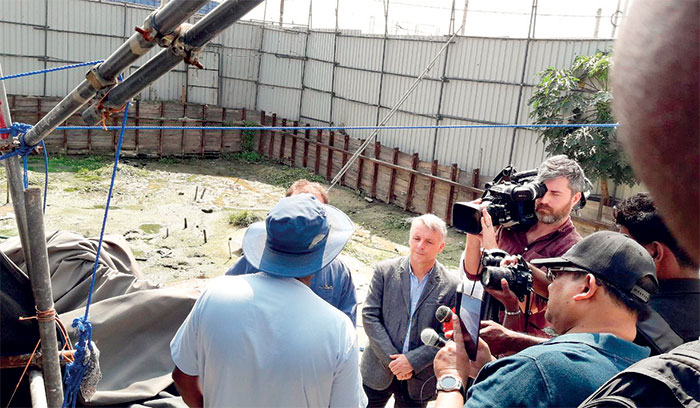
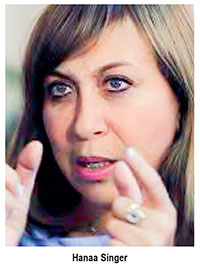 As the writer earlier stressed, a section of the Colombo-based diplomatic community, in a way functions as a partisan and unashamed political grouping. An influential section of the civil society and the media cooperate with the grouping resulting in various issues being taken up. They aggressively addressed Sri Lanka’s policy of cremating bodies of all Covid-19 victims. Those who had accepted and appreciated external interventions on behalf of the Muslim community must have been quite surprised over their silence against the backdrop of nearly 580,000 people so far deprived of AstraZeneca/Covishield booster shot.
As the writer earlier stressed, a section of the Colombo-based diplomatic community, in a way functions as a partisan and unashamed political grouping. An influential section of the civil society and the media cooperate with the grouping resulting in various issues being taken up. They aggressively addressed Sri Lanka’s policy of cremating bodies of all Covid-19 victims. Those who had accepted and appreciated external interventions on behalf of the Muslim community must have been quite surprised over their silence against the backdrop of nearly 580,000 people so far deprived of AstraZeneca/Covishield booster shot.
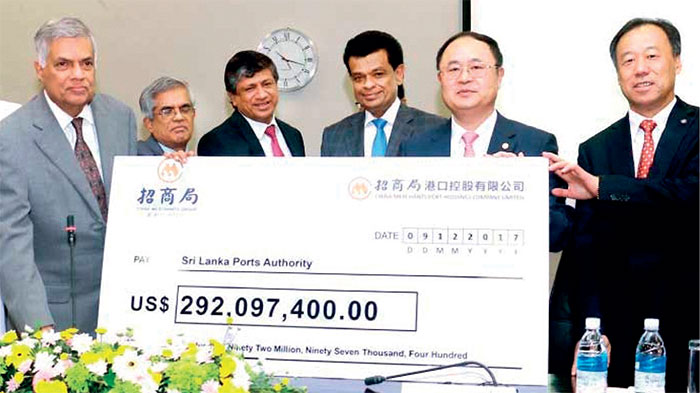

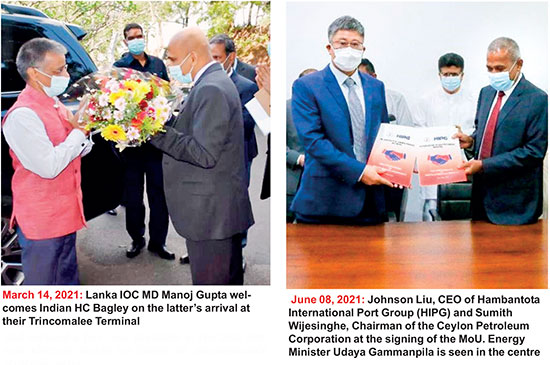
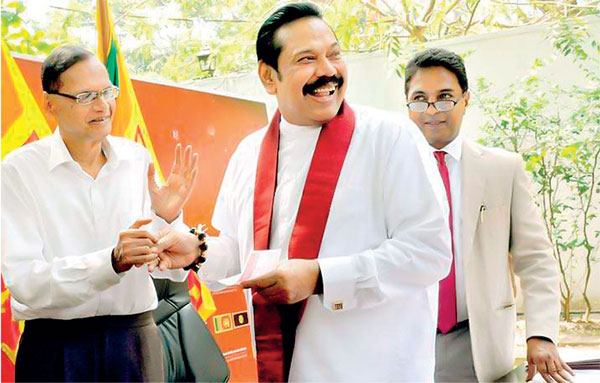
 State Minister Dr. Godahewa, during an inspection tour, on June 09, of Sarakkuwa and Dungalpitiya areas badly affected by the sinking of the fire-ravaged X-Press Pearl container carrier, didn’t mince his words when he explained the state of the national economy. Dr. Godahewa, who had served the private sector quite efficiently, before turning to party politics, explained the pathetic state of the national economy. What he said was simply frightening. Assuring the SLPP’s commitment to provide relief to those who had been affected, Dr. Godahewa declared that one fourth of state revenue had been spent on ongoing efforts to bring the Covid-19 epidemic under control. Dr. Godahewa asserted that the government faced the prospect of total collapse of state revenue. The State Minister’s assertion cannot be taken lightly.
State Minister Dr. Godahewa, during an inspection tour, on June 09, of Sarakkuwa and Dungalpitiya areas badly affected by the sinking of the fire-ravaged X-Press Pearl container carrier, didn’t mince his words when he explained the state of the national economy. Dr. Godahewa, who had served the private sector quite efficiently, before turning to party politics, explained the pathetic state of the national economy. What he said was simply frightening. Assuring the SLPP’s commitment to provide relief to those who had been affected, Dr. Godahewa declared that one fourth of state revenue had been spent on ongoing efforts to bring the Covid-19 epidemic under control. Dr. Godahewa asserted that the government faced the prospect of total collapse of state revenue. The State Minister’s assertion cannot be taken lightly.